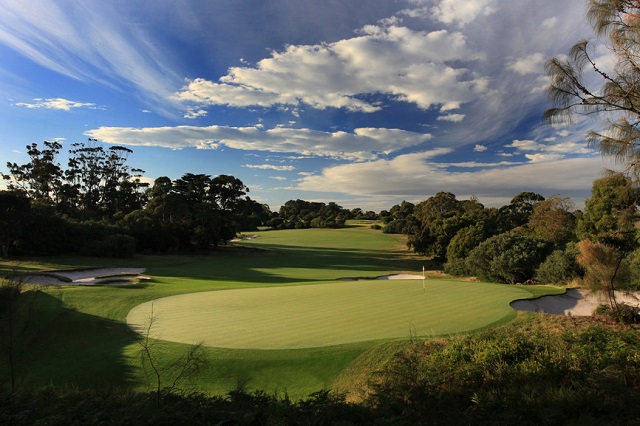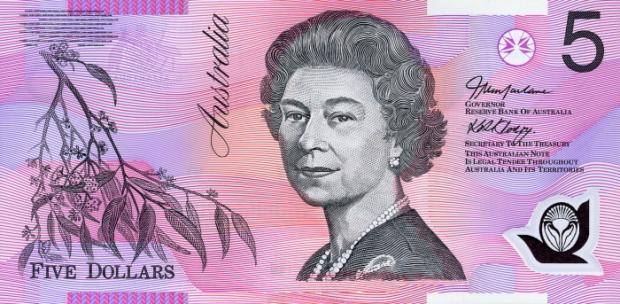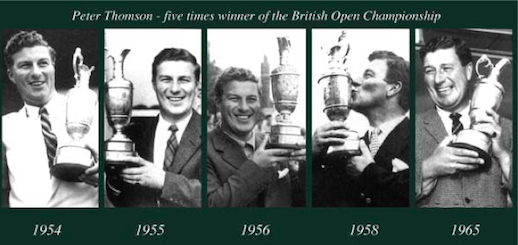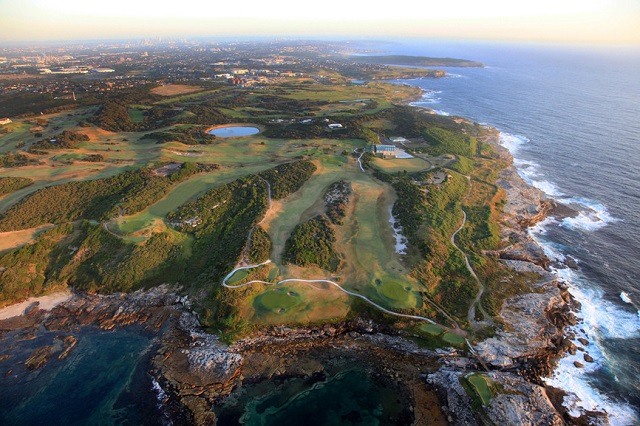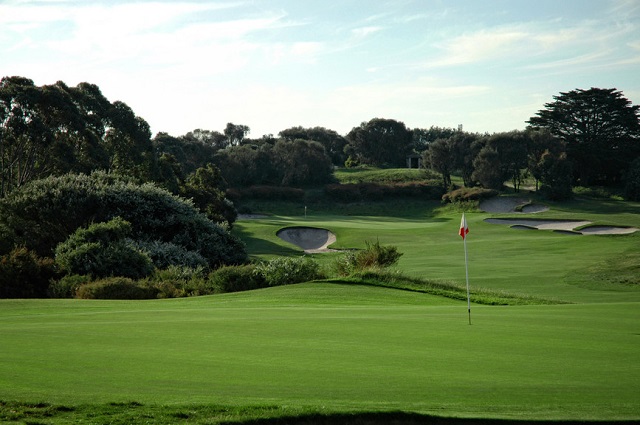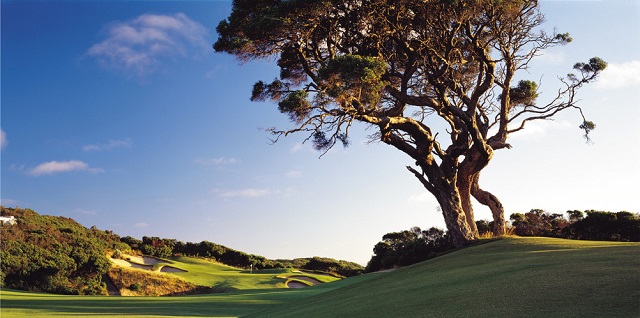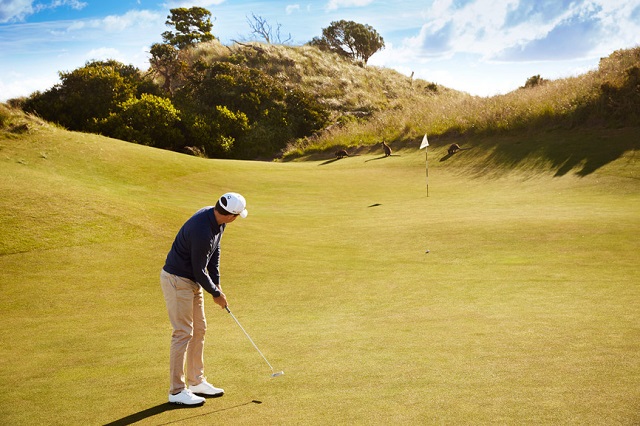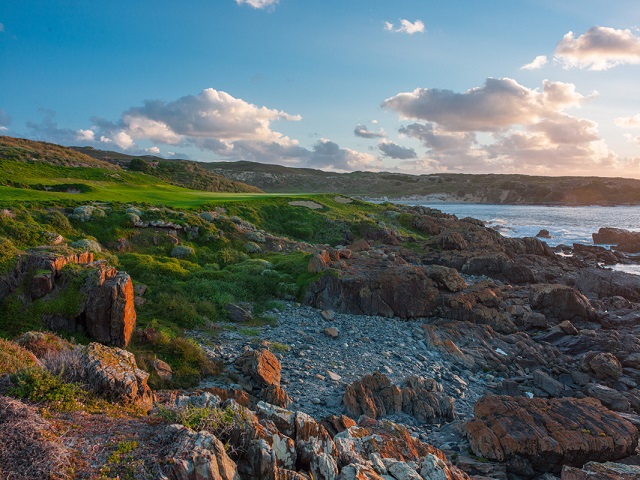This piece first appeared, in somewhat different form, as “A Convenient Truth: The Open Championship Should Be Held in Australia” in the 2015 Open Championship edition of The Grain.
When one of Ireland’s great courses was announced last May as a likely venue for the 2019 Open Championship an understandable frisson shot through the world of golf. Holding the Open at Royal Portrush will be the first time the event has been played off the main island of Great Britain since 1951, when it was held at—Royal Portrush. One small step for golf, the R&A and the United Kingdom, which Northern Ireland is still part of.
Here’s an idea for a giant leap—hold the Open Championship in Australia. No longer part of the United Kingdom? True, but Australia is still a member of the Commonwealth of Nations and its Queen is Queen Elizabeth II. That’s good enough for me right there; if the same queen is the titular head of both islands, then the battle for the Champion Golfer of the Year crown should be waged on both soils.
True, the argument loses some steam if we consider other member nations. Clearly, Bangladesh is not ready to host an Open. Zambia is no doubt a ways off, too. One nation at a time, then.
But the other, and unassailable point in favor of taking the Championship down under is that it has some of the finest golf courses in the world, fully ready to test the game’s greatest competitors. Indeed, those courses bred great competitors who traveled from their Australian home to ultimately hoist the Claret Jug: Peter Thomson (five times!), Kel Nagle, Greg Norman, Ian-Baker Finch and Adam Scott. Oops, not quite Adam Scott, but that was a close one in 2013.
There are wonderful courses throughout the country, but some of the best seem to fetch up in the southeast. We’ve picked five that offer a blend of great golf and compelling locale. Heading south from Sydney:
New South Wales Golf Club: In the Botany Bay National Park overlooking a rugged Pacific Ocean coastline, this links-style masterpiece was laid out in 1926 by none other than Dr. Alister MacKenzie. Unfinished upon its opening in 1928, the course has been tinkered with by teams of architects ever since—including Norman and his one-time chief design lieutenant Bob Harrison. But the good doctor’s routing remains largely intact and a round here bucket list worthy. Plus it’s only 20 minutes from Sydney, the capital of New South Wales, the state.
One could remain busy in Sydney merely photographing iconic sites (and sights) like the famed Opera House or the Sydney Harbour Bridge, which might be enough of an excuse not to climb the Bridge, a nonetheless enormously popular activity for those with three-and-a-half hours to spare and a lack of vertigo. Foodies will find Sydney an infinite feast, and there’s such a lively coffee culture the annual The Rocks Aroma Festival goes on for twenty days each July, with the world’s most alert attendees.
<<<>>>
Royal Melbourne Golf Club: MacKenzie, in his busy Australian year of 1926, drew up the plans for the West Course at Royal Melbourne, which was largely fashioned by his in-country partner Alex Russell in 1931. It’s been pretty much considered the best layout in the country ever since. Russell also designed the East Course, and a Composite Course (12 holes from the West, six from the East) is already tournament tested and able to handle Open Championship crowds. A frequent World Cup site, Royal Melbourne has twice hosted The Presidents Cup (1998, 2011). It’s ready.
Melbourne is the capital of Victoria, in what is called the Sandbelt region of Australia. It has more excellent golf courses than any other cosmopolitan area on the planet, although the MCG—the Melbourne Cricket Ground—is where the teeming sports action unfolds, Aussie Rules Football as well as cricket. The city is arguably the cultural capital of Australia, Sydneyites being most likely to argue. The annual Melbourne Food & Wine Festival takes place mainly in March, but has year-long events to tuck into for fans of almost any consumable, from wild game to burgers, chocolate to pastries to craft beer.
<<<>>>
When Melburnians go on a seaside holiday they frequently head a little over an hour southeast to the Mornington Peninsula, a magnet for its beaches, fishing, diving and other water sports near such bayside villages as Portsea and Sorrento. As is much of the country it’s also a viable viniculture region. The local passion for good food and wine rides high enough that there are regularly scheduled epicurean tours. And as if Melbourne didn’t have enough great golf, the Peninsula is replete with about 20 more excellent tracks.
One, The Moonah Course at The National Golf Club near Cape Schanck, may well be Greg Norman’s greatest design, again with the assistance of Bob Harrison. In the so-called Cups region, for the characteristic ancient rolling sand dunes, this expansive track is one of three at The National and would lend an Open a stark beauty as well as challenge. There’s a remarkable sensation of spaciousness and movement here, framed by native grasses, natural bunkering and the ever-present Moonah trees, gnarled ancients said to routinely live more than 300 years.
<<<>>>
Barnbougle Dunes: If any course threatens to knock Royal Melbourne off its perennial No. 1 ranking perch it is this 2004 upstart in the northwest part of the island state of Tasmania. A dazzling links co-created by Tom Doak and Michael Clayton, the course has been an object of golfers’ desires since day one. The lust to play was not helped in the least when the Coore & Crenshaw firm came aboard in 2010 with an adjacent second course, the 20-hole Lost Farm. U.S. visitors may sense a Bandon Dunes kinship—and indeed Mike Keiser was involved here as well—in the beauty of the courses, their seeming remoteness from civilization, and in the arguments over which course is better.
The delightful seaside town of Bridport is nearby, though the real action in Tasmania these days is in the booming art, nature and food scene in the city of Hobart, about three hours south by car. It’s a good place to take off on the Tasmanian Whiskey Trail. And if starting to feel guilty about all the booze and golf, visits to the five UNESCO World Heritage convict sites on the island should prove pleasant penance.
<<<>>>
Cape Wickham: If this year’s Open (U.S. version) can be held at a relatively new course like Chambers Bay, then by the time we’ve worked out the wrinkles over holding the Open (U.K. version) in Australia Cape Wickham will be filling its tee sheet. Right now it’s scheduled to open in late October, and reviews from some preview play suggest this is going to be a very special new links course. As in very special. Anyone who has played the superb Kingsley Club in Michigan knows what designer Mike DeVries is capable of, and here he had a splendidly remote coastal setting to work with.
Located on King Island, situated off the northwest coast of Tasmania in the Bass Strait, Cape Wickham is even more remote than Barnbougle Dunes. It’s surrounded by some of the country’s best surfing beaches, which is saying something, and the seafood can’t be beat. Whether that will be enough to convince Peter Alliss to make the trip may take a little more work.

